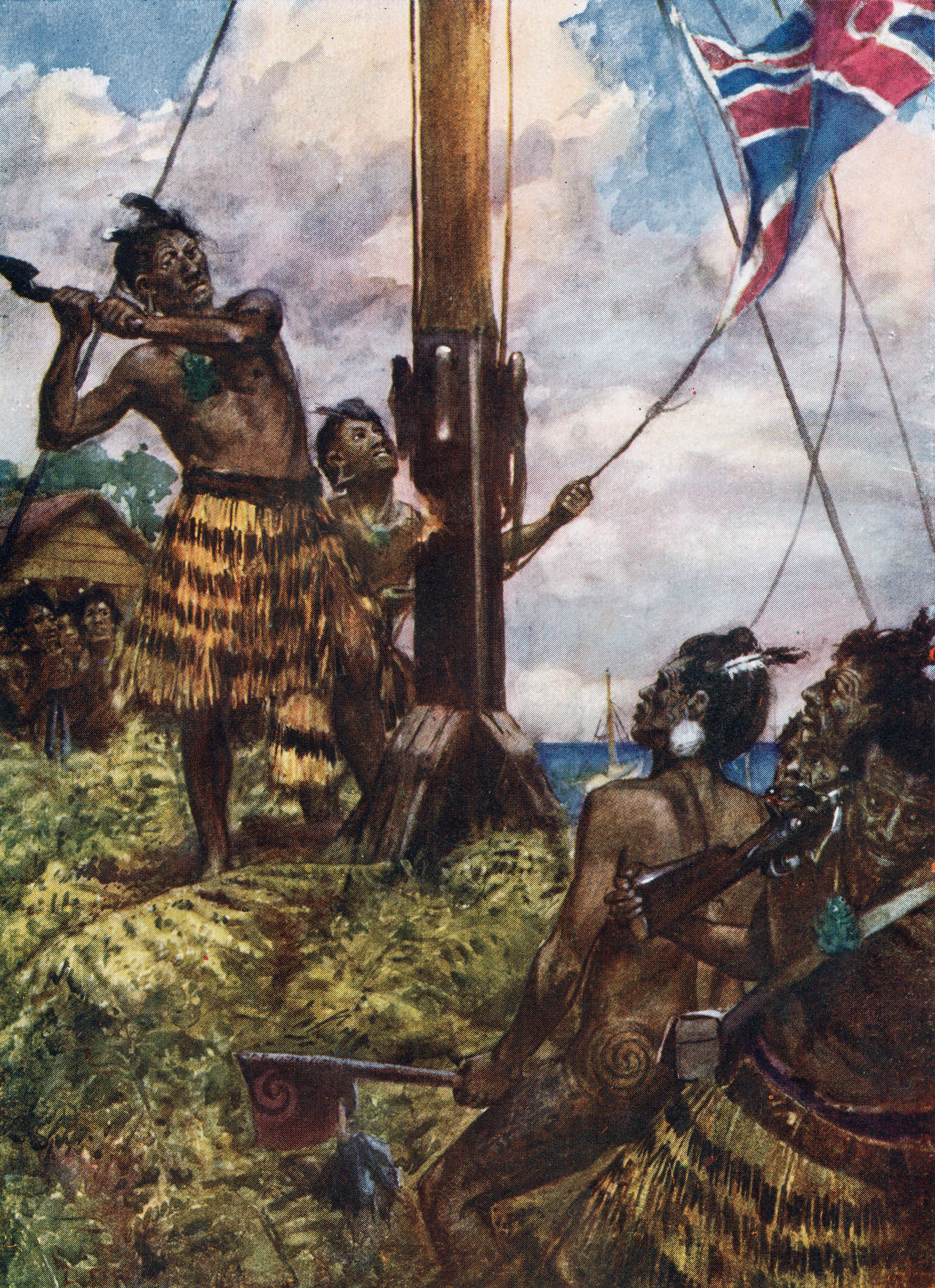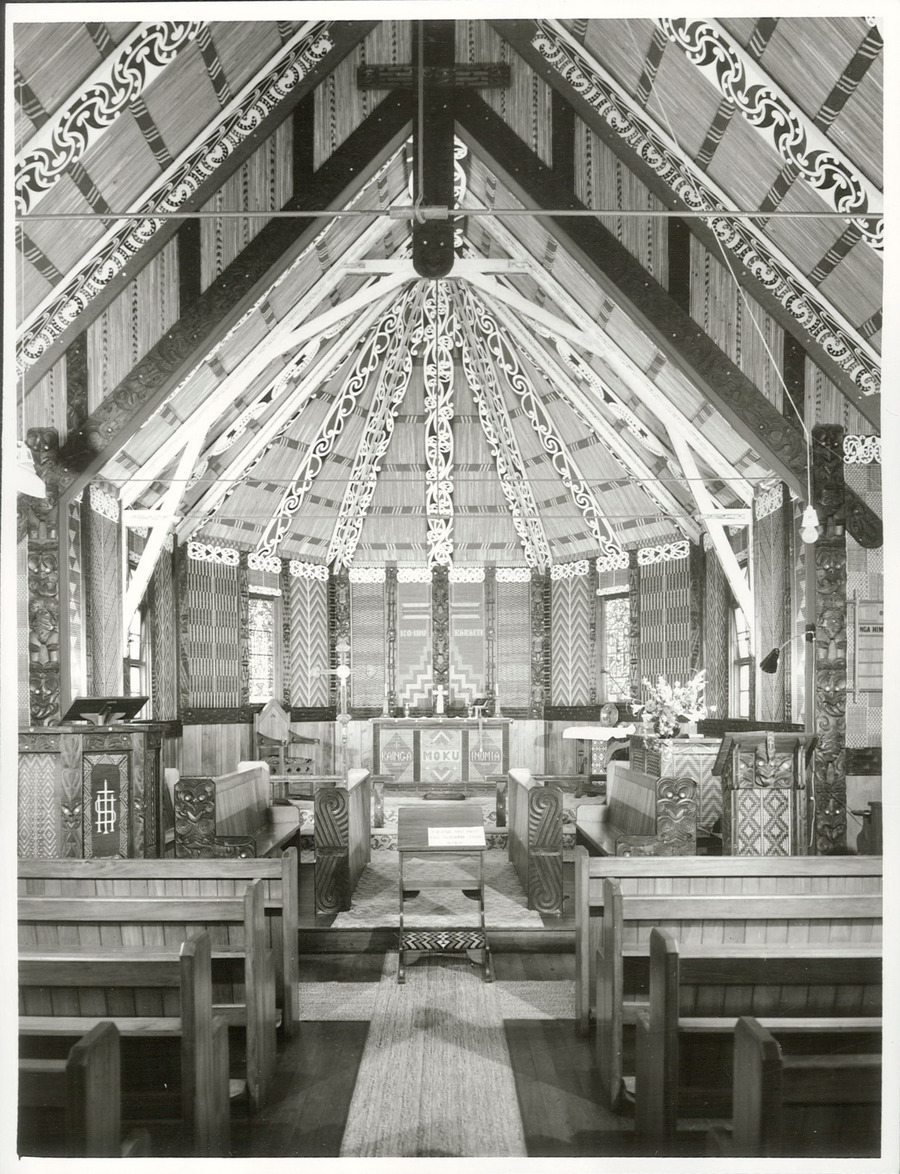|
Pā
The word pā (; often spelled pa in English) can refer to any Māori village or defensive settlement, but often refers to hillforts – fortified settlements with palisades and defensive terraces – and also to fortified villages. Pā sites occur mainly in the North Island of New Zealand, north of Lake Taupō. Over 5,000 sites have been located, photographed and examined, although few have been subject to detailed analysis. No pā have been yet located from the early colonization period when early Polynesian-Māori colonizers lived in the lower South Island. Variations similar to pā occur throughout central Polynesia, in the islands of Fiji, Tonga and the Marquesas Islands. In Māori culture, a great pā represented the mana (prestige or power) and strategic ability of an iwi (tribe or tribal confederacy), as personified by a rangatira (chieftain). Māori built pā in various defensible locations around the territory (rohe) of an iwi to protect fertile plantation-sites a ... [...More Info...] [...Related Items...] OR: [Wikipedia] [Google] [Baidu] |
New Zealand Wars
The New Zealand Wars took place from 1845 to 1872 between the New Zealand colonial government and allied Māori on one side and Māori and Māori-allied settlers on the other. They were previously commonly referred to as the Land Wars or the Māori Wars, while Māori language names for the conflicts included ("the great New Zealand wars") and ("the white man's anger"). Historian James Belich popularised the name "New Zealand Wars" in the 1980s, although according to Vincent O'Malley, the term was first used by historian James Cowan in the 1920s. Though the wars were initially localised conflicts triggered by tensions over disputed land purchases, they escalated dramatically from 1860 as the government became convinced it was facing united Māori resistance to further land sales and a refusal to acknowledge Crown sovereignty. The colonial government summoned thousands of British troops to mount major campaigns to overpower the Kīngitanga (Māori King) movement and also c ... [...More Info...] [...Related Items...] OR: [Wikipedia] [Google] [Baidu] |
Auckland
Auckland (pronounced ) ( mi, Tāmaki Makaurau) is a large metropolitan city in the North Island of New Zealand. The most populous urban area in the country and the fifth largest city in Oceania, Auckland has an urban population of about It is located in the greater Auckland Region—the area governed by Auckland Council—which includes outlying rural areas and the islands of the Hauraki Gulf, and which has a total population of . While Europeans continue to make up the plurality of Auckland's population, the city became multicultural and cosmopolitan in the late-20th century, with Asians accounting for 31% of the city's population in 2018. Auckland has the fourth largest foreign-born population in the world, with 39% of its residents born overseas. With its large population of Pasifika New Zealanders, the city is also home to the biggest ethnic Polynesian population in the world. The Māori-language name for Auckland is ', meaning "Tāmaki desired by many", in ref ... [...More Info...] [...Related Items...] OR: [Wikipedia] [Google] [Baidu] |
Putiki Pā, Whanganui (17191005777)
Putiki is a settlement in the Whanganui District and Manawatū-Whanganui region of New Zealand's North Island, located across the Whanganui River from Whanganui city. It includes the intersection of State Highway 3 and State Highway 4. The settlement was established around Pūtiki Pā, a tribal meeting ground of Ngāti Tumango and Ngāti Tupoho. It features Te Paku o Te Rangi meeting house, also known as Aotea meeting house. History 19th century Pūtiki Pā, recorded variously as Putiki Wharanui, Putiki Wharenui, Putiki Warenui, or by its full name Putiki-wharanui-a-Tamatea-pokai-whenua, as a well established pā well before European arrival. The settlement was attacked by Ngāti Toa in a bloody two-month siege in 1828 or 1829. About 400 locals were killed in the encounter. Pūtiki was the main Māori settlement at the Whanganui River mouth when Europeans began settling on the river in the 1840s. Māori from Pūtiki signed a deed of purchase with Edward Gibbon Wakefield fo ... [...More Info...] [...Related Items...] OR: [Wikipedia] [Google] [Baidu] |
Māori People
The Māori (, ) are the indigenous Polynesian people of mainland New Zealand (). Māori originated with settlers from East Polynesia, who arrived in New Zealand in several waves of canoe voyages between roughly 1320 and 1350. Over several centuries in isolation, these settlers developed their own distinctive culture, whose language, mythology, crafts, and performing arts evolved independently from those of other eastern Polynesian cultures. Some early Māori moved to the Chatham Islands, where their descendants became New Zealand's other indigenous Polynesian ethnic group, the Moriori. Initial contact between Māori and Europeans, starting in the 18th century, ranged from beneficial trade to lethal violence; Māori actively adopted many technologies from the newcomers. With the signing of the Treaty of Waitangi in 1840, the two cultures coexisted for a generation. Rising tensions over disputed land sales led to conflict in the 1860s, and massive land confiscations, to which ... [...More Info...] [...Related Items...] OR: [Wikipedia] [Google] [Baidu] |
Volcano
A volcano is a rupture in the crust of a planetary-mass object, such as Earth, that allows hot lava, volcanic ash, and gases to escape from a magma chamber below the surface. On Earth, volcanoes are most often found where tectonic plates are diverging or converging, and most are found underwater. For example, a mid-ocean ridge, such as the Mid-Atlantic Ridge, has volcanoes caused by divergent tectonic plates whereas the Pacific Ring of Fire has volcanoes caused by convergent tectonic plates. Volcanoes can also form where there is stretching and thinning of the crust's plates, such as in the East African Rift and the Wells Gray-Clearwater volcanic field and Rio Grande rift in North America. Volcanism away from plate boundaries has been postulated to arise from upwelling diapirs from the core–mantle boundary, deep in the Earth. This results in hotspot volcanism, of which the Hawaiian hotspot is an example. Volcanoes are usually not created where two tectonic ... [...More Info...] [...Related Items...] OR: [Wikipedia] [Google] [Baidu] |
Palisade
A palisade, sometimes called a stakewall or a paling, is typically a fence or defensive wall made from iron or wooden stakes, or tree trunks, and used as a defensive structure or enclosure. Palisades can form a stockade. Etymology ''Palisade'' derives from ''pale'', from the Latin word ', meaning stake, specifically when used side by side to create a wood defensive wall. Typical construction Typical construction consisted of small or mid-sized tree trunks aligned vertically, with as little free space in between as possible. The trunks were sharpened or pointed at the top, and were driven into the ground and sometimes reinforced with additional construction. The height of a palisade ranged from around a metre to as high as 3–4 m. As a defensive structure, palisades were often used in conjunction with earthworks. Palisades were an excellent option for small forts or other hastily constructed fortifications. Since they were made of wood, they could often be quickly and eas ... [...More Info...] [...Related Items...] OR: [Wikipedia] [Google] [Baidu] |
Pahu
The pahu or pau is a traditional musical instrument found in Polynesia: Hawaii Hawaii ( ; haw, Hawaii or ) is a state in the Western United States, located in the Pacific Ocean about from the U.S. mainland. It is the only U.S. state outside North America, the only state that is an archipelago, and the only ..., Tahiti, Cook Islands, Samoa, and Tokelau. Carved from a single log and covered on the playing end with a stretched sharkskin, the pahu is played with the palms and fingers of the hand. It is considered a sacred instrument and was generally kept in a temple (heiau), and used to accompany a repertoire of sacred songs called hula pahu/ura pau. The Hawaiian term Pahu translates into 'drum,' ‘Niu’ being the Hawaiian word for ‘coconut.' Although there are a number of specific types of percussion instruments used in Hawaiian cultural expressions of music, the Pahu is perhaps one of the most important percussion devices known to Hawaii, both ancie ... [...More Info...] [...Related Items...] OR: [Wikipedia] [Google] [Baidu] |
Artificial Island
An artificial island is an island that has been constructed by people rather than formed by natural means. Artificial islands may vary in size from small islets reclaimed solely to support a single pillar of a building or structure to those that support entire communities and cities. Early artificial islands included floating structures in still waters or wooden or megalithic structures erected in shallow waters (e.g. crannógs and Nan Madol discussed below). In modern times artificial islands are usually formed by land reclamation, but some are formed by the incidental isolation of an existing piece of land during canal construction (e.g. Donauinsel, Ko Kret, and much of Door County, Wisconsin), or flooding of valleys resulting in the tops of former knolls getting isolated by water (e.g., Barro Colorado Island). One of the world's largest artificial islands, René-Levasseur Island, was formed by the flooding of two adjacent reservoirs. History Despite a popular image o ... [...More Info...] [...Related Items...] OR: [Wikipedia] [Google] [Baidu] |
Storage Pit (archaeology)
Storage pits are underground cists that were used historically to protect the seeds for the following year's crops, and to stop surplus food from being eaten by insects and rodents. These underground pits were sometimes lined and covered, for example with slabs of stone and bark and tightly sealed with adobe.''Man in the San Juan Valley.'' Aztec Ruins National Monument, National Park Service. January 13, 2001. Retrieved 10-18-2011. Examples Sannai-Maruyama Site in , |
Defensive Wall
A defensive wall is a fortification usually used to protect a city, town or other settlement from potential aggressors. The walls can range from simple palisades or earthworks to extensive military fortifications with towers, bastions and gates for access to the city. From ancient to modern times, they were used to enclose settlements. Generally, these are referred to as city walls or town walls, although there were also walls, such as the Great Wall of China, Walls of Benin, Hadrian's Wall, Anastasian Wall, and the Atlantic Wall, which extended far beyond the borders of a city and were used to enclose regions or mark territorial boundaries. In mountainous terrain, defensive walls such as '' letzis'' were used in combination with castles to seal valleys from potential attack. Beyond their defensive utility, many walls also had important symbolic functions representing the status and independence of the communities they embraced. Existing ancient walls are almost always mason ... [...More Info...] [...Related Items...] OR: [Wikipedia] [Google] [Baidu] |
Adam Matthew Digital
Adam Matthew Digital is an academic publisher based in the United Kingdom and the United States. It has been an independent subsidiary of Sage Publications since 2012. The company specializes in online primary source databases and curated collections for the humanities and social sciences. Its corporate offices are in Marlborough, Wiltshire. History Adam Matthew Publications was founded in 1990 by David Tyler and William Pidduck. The company focused on publishing microfilm collections with a back list of over 600 titles until publishing their first ‘digital’ collections in the late 1990s on CD-ROM, and releasing its first truly online resources in the early 2000s. By the mid-2000s, the company directors – now including Khal Rudin - founded Adam Matthew Digital to focus solely on the development and production of digital collections, and began trading as a separate entity from 1 January 2007. On 5 October 2012, the company was acquired by SAGE Publications. Collections ... [...More Info...] [...Related Items...] OR: [Wikipedia] [Google] [Baidu] |
Bridget Williams Books
Bridget Williams Books is a New Zealand book publisher, established in 1990 by Bridget Williams. Establishment Williams established the company in 1990 when the company she was working for, Allen & Unwin, was sold. She purchased the titles which she had developed as Allen & Unwin's managing director and started her own publishing company. Williams' vision for the company was for it to publish "good books that sell" – books with significant messages. Her personal interests in women's and Māori history, and New Zealand general history, have influenced the books that the company publishes. From 1995 to 1998, the company published under a joint imprint with Auckland University Press, before returning to independent publisher status in 1998. Development In 2006, the company established the Bridget Williams Publishing Trust, which applies for grants from philanthropic organisations to support publication of specific titles. For example, in 2013 the J.R. McKenzie Trust provid ... [...More Info...] [...Related Items...] OR: [Wikipedia] [Google] [Baidu] |

_p225_AUCKLAND%2C_NEW_ZEALAND.jpg)



_LACMA_M.2008.66.11.jpg)


